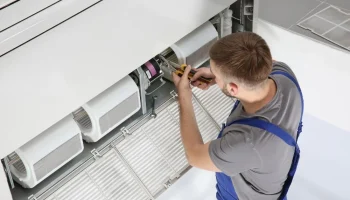A handrail is a wall fixture that is held to provide support and stability. It is often a standard feature on a staircase but in the home of a senior, the positioning of handrails should always extend slightly beyond a staircase. The purpose of handrails is to help bear the weight of a
person so that they have more stability when walking, rising, bending or even standing.
Handrails for elderly can often be found in many places throughout the home, often placed on walls. These locations can include above the bathtub, next to the washbasin, in the garage where it can be reached near an open car door, next to the bed, in the shower, or beside couches.
Each country has its own strict specifications regarding handrail strength and framework. But the two most commonly used handrails are wood and metal, usually aluminium. Plastic frames are not often used, and sometimes rubber is used to create a grip for the hands.
With all this in mind, there are a few main benefits of having handrails in the home.
Make the Bathroom Safe
It can be stressful for those with mobility issues to have to deal with the fear of falling or slipping in the bathroom, or even struggling to get up from the toilet. The safer the bathroom is, the more peace of mind the elderly and disabled enjoy.
Kitchen Safety
Many people think of handrails in the bathroom, but the kitchen is also another area where it is common to slip and fall. If a person falls onto glass or hot liquids from the stovetop, further injuries can occur. Often, people struggling with mobility will depend on counters, tables or structures when reaching, rising or setting. These objects are not made for safety and can lead to injuries. Well placed handrails can prevent these injuries easily.
Outdoor Safety
Having handrails outside can easily save lives. Many walkways and gardens have uneven spaces where people can lose their balance. This issue pertains to people of all ages and abilities. Handrails outside are a useful aid to reduce fall risk and can prevent accidents from happening.
Indoor/Outdoor Ramps
Many people may already have or wish to have ramps inside and outside their homes. These can be installed for people using wheelchairs or scooters, walkers, or crutches. Unfortunately, many people forget that ramps need handrails, especially when climbing up or down, where they can lose balance, or outdoors where the floor can be slippery. This is why handrails with ramps are vital.
Value to The Home
If you ever decide to sell, a home with handrails can be valuable, especially as people with accessibility needs are often let down by the housing market. Making your home more accessible is absolutely an investment that goes beyond your time in the home.
The Verdict
Ideally, if you want handrails in your home, installation should be done by professionals. This is to prevent damage to the property and reduce the risk of handrail collapse. If you do decide to DIY the installations, appropriate care should be taken in installation. Additionally, it’s important to routinely check the handrail fasteners for wear and tear, both for stainless steel safety rails and wooden rails.





